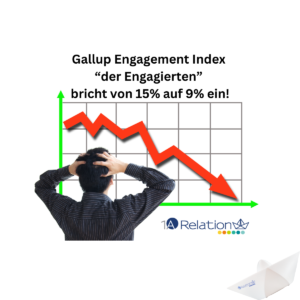How do you digitize the tradition of a city festival in the shortest possible time? The city of
Aarau and gateB have shown the way.
This blog post uses the success story of the smart city of Aarau to shed light on the key
key success factors for the digitalization of processes and shows how the symbiosis of tradition and
symbiosis of tradition and digitalization has been further developed.
DIE METHODIK: Groß denken. Klein anfangen. Wachse Schritt für Schritt.
A city does not become smart overnight. It all starts with a big vision, and many small steps are
many small steps are necessary. With the city of Aarau, gateB has taken this approach
and expanded it: the path must also be iterative and hybrid.

Pragmatic conception and iterative implementation alternate.
Conception and implementation are closely intertwined. Questions such as “What
do we want to achieve? What use cases do we have? What is the scope?” set the direction.
the direction. But then it is important to get to implementation as quickly as possible. This
simply start with a use case, run the campaign and learn from it.
learn from it. Anything that is still missing then flows into the requirements for the next iteration.
“The iterative cycle gives us the agility, speed and flexibility to deal with all the
unexpected things that come up in the project.” Robert Schumacher, Director
gateB.v
Nobody can foresee the actual hurdles in a project. A good
starting point is a workshop in which different departments, competencies and
responsibilities come together. Once a long list of potential use cases has been
has been identified, two to three use cases are enough to start with.

Step by step to the smart city
The iterative process, the pursuit of continuous improvement, does not only take place
in the projects, but also on a human level.
“Our city is becoming a smart city step by step – not through large, unachievable projects, but through agile
projects, but through agile, iterative progress. Every digital improvement is like a
paving stone on this path. And the best thing about it is that everyone can lay a stone themselves,
Fabian Hug, Project Manager for Digital Transformation City of Aarau.
THE PROCEDURE: Use case for use case – instead of big bang
Use case 1: May procession
The invitation processing was digitized for the festive procession of the city of Aarau.
The aim was to harmoniously and effectively combine the tradition of the town festival with digitalization.
digitization. In just two months, the team succeeded in switching from analog
ticket sales in the city office to digital banquet tickets with a QR code – including
six BSI workflows, 11 landing pages, surveys and internal newsletters.
“For us as a city, it really was almost an innovation.” Fabian Hug, City of Aarau
One of the lessons learned: the interface between humans and machines should be
always in the interests of people: of the 2,600 tickets sold, only a good half of the QR codes were
tickets sold, only a good half of the QR codes were scanned, as the intention is to only take random samples
and not “100% monitoring”. The mindset also plays an important role:
How do we use technology so that it benefits people? The interaction
between people and technology is crucial and not always predictable.
Use Case 2: Green waste subscription
For the green waste subscription, a subscription for the disposal of green waste, gateB worked with the
with the city of Aarau to develop a digital system with interfaces to invoice processing and waste
management. The actual scope of the project only became clear as it progressed.
New requirements emerged from conversation to conversation. The basic concept was
workflows were added step by step.
One of the lessons learned: the “digital first” approach requires a hybrid approach for public institutions with
analog structures requires a hybrid approach. For example, citizens must continue to order their subscription
continue to be able to order their subscription on site and pay by invoice
be able to pay by invoice. This requires the right interfaces between the various systems.
systems. The iterative process is one of the most valuable tools for making constant progress
even if not everything works perfectly in the background.
Use Case 3: Stadtidee
Stadtidee is a grassroots democratic citizen project in which citizens can digitally implement their own ideas with a
ideas digitally with a participatory budget. To this end, the citizens’ data was
gradually introduced into the CRM. BSI was only a small building block. Many other
stakeholders and three universities were also involved.
One of the lessons learned: a CRM grows organically. At the beginning, it is rarely clear what hurdles
and requirements a project will entail. A first step is to collect many relevant use
cases and to create a data model that is as comprehensive and scalable as possible at the start.
data model that is as comprehensive and scalable as possible. The CRM model must then be gradually expanded with the
data migration from the various systems into one form.
THE CONCLUSION:
- Start with a concrete use case in order to learn as quickly as possible.
- Take an iterative approach, continuously improve and scale step by step
- Work together with others on an interdisciplinary basis. No one can answer all questions alone.
- Work in an integrated way, i.e. with use cases and on the basis of user journeys.
- Have the courage to make mistakes. This is the only way to learn and move a project forward.
- Every step counts. Even small steps often move a project into completely new dimensions.
Author:
Robert Schumacher, Director gateB
Robert is one of Switzerland’s leading pioneers in the fields of data-driven marketing and CRM. He has been working in various functions in the field of direct marketing for over 20 years. Most recently, he was responsible for Customer Intelligence at SAS Institute Switzerland for over 6 years. Since November 2015, he has been Director of Business Development at gateB in the area of Customer Engagement.
Engagement. He shares his knowledge as a lecturer at various universities (including ZHAW Winterthur and HSLU Lucerne).
About gateB:
As a global consulting and implementation company, gateB unlocks the digital potential of companies. We transform business models and processes to strengthen customer relationships in the long term.
With our integrated approach and our data and technology expertise, we offer
powerful digital solutions that create measurable added value. This enables us to
our customers to build long-term relationships.
gateB was founded in 2009 in Steinhausen, Switzerland, and currently employs over 150
consultants, data scientists, software engineers and digital experts in the five offices in
offices in Steinhhausen, Hamburg, Los Angeles, New Delhi and Singapore. Learn more at












